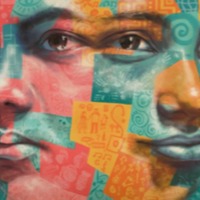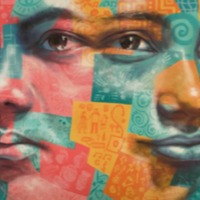
Galyna
There are an estimated 794,000 people living in conditions of modern slavery in Russia (GSI 2018). Women and children are subjected to commercial sexual exploitation and sex trafficking in prostitution and pornography. Women are lured by the promise of lucrative employment and a new location, travelling to the country under the pretence of legitimate employment and a better life. However, when they arrive, they are forced into prostitution in brothels, hotels and saunas. There is also evidence of traffickers advertising sexual services of children online. However, despite the evidence of sex trafficking in Russia, it remains an under-recognised area of enslavement in the country. Galyna*, a 25-year-old woman from Donetsk (Ukraine) worked at a bar in Moscow. In addition to dancing, her employer forced her to perform sex-services for clients, though this was not agreed prior to employment. She had no written contract and received payment from clients and her employer in cash. She was also forced to perform services, such as unprotected sex, under threat of non-payment and dismissal. No social security or health care was provided, and she had no registered place of residence. When stopped by the police in the street, she had to pay bribes. Her relatives in Ukraine did not know what she was doing in Moscow. She sent money home to help her parents and hoped to find another job. Only migrants work at the club and they knew next to nothing about their employer.

Sharmila Wijeyakumar
There are an estimated 403,000 people living in modern slavery in the United States (GSI 2018). Sex trafficking exists throughout the country. Traffickers use violence, threats, lies, debt bondage and other forms of coercion to compel adults and children to engage in commercial sex acts against their will. The situations that sex trafficking victims face vary, many victims become romantically involved with someone who then forces them into prostitution. Others are lured with false promises of a job, and some are forced to sell sex by members of their own families. Victims of sex trafficking include both foreign nationals and US citizens, with women making up the majority of those trafficked for the purposes of commercial sexual exploitation. In 2015, the most reported venues/industries for sex trafficking included commercial-front brothels, hotel/motel-based trafficking, online advertisements with unknown locations, residential brothels, and street-based sex trafficking. Sharmila ran away from her home when she was a teenager. She found herself working in a nightclub where she was trafficked for commercial sexual exploitation. Sharmila was helped to escape by a patron of the brothel where she was being kept. However, finding herself homeless she agreed to work in another brothel. She was rescued by her family from the second brothel. While training to be a chef in Florida, Sharmila finally felt safe enough to share her trafficking experience with people she knew. However, 48 hours after doing so, she was trafficked for a third time. A church helped Sharmila escape these traffickers and she now works for the organisation Rahab’s Daughters to help other people escape their traffickers.

Irina V.
Irina V. was trafficked into Germany from Russia, where traffickers abduct an estimated 55,000 women each year. She was taken along the so-called “Eastern Route” through Poland. This is a key overland corridor for trafficking women into the EU from Russia, Ukraine, Romania, and the Baltics. Her narrative grapples with the fact that her enslavers “continue to traffic women” and also outlines a more practical problem. Upon her escape, she “began a long, terrible process of multiple questionings and misunderstandings,” was placed in prison for three months, and only received assistance from an NGO.